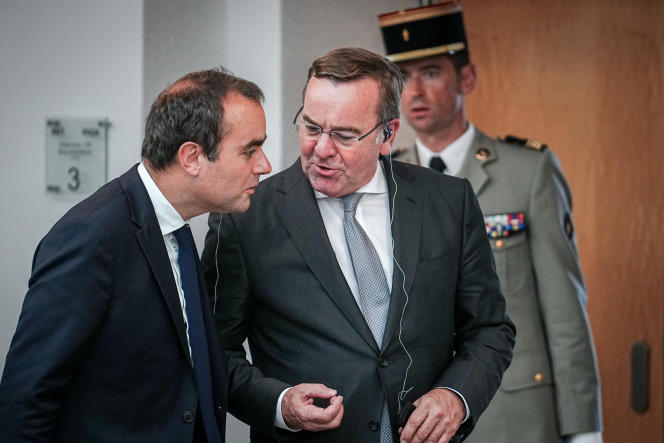The Minister of the Armed Forces, Sébastien Lecornu, receives his counterpart Boris Pistorius at the Evreux air base, Thursday September 21, to relaunch the Franco-German MGCS (Main Ground Combat System) battle tank project. The opportunity to discuss the defense disputes which are straining relations between the two countries.
A few days ago, the German press mentioned a new European tank project between Germans, Spaniards and Italians, which caused a stir in France. Does it compete with the Franco-German MGCS project, launched in 2017 and which seems to be at a standstill? ?
Boris Pistorius: You are right, there is a European project to develop a modern assault tank. But this is not a project launched by States. These are private companies from the arms industry that participate.
This project therefore does not represent for us an alternative to the MGCS. Sébastien Lecornu and I are determined to continue the MGCS project and thus lay the foundations for one of the most modern armored systems in the world. Our teams and we meet very regularly for this and have intense discussions. Our common idea is to think of the MGCS as an open project so that other partners who are members of the European Union [UE] can join him.
We sense a political will to bring the MGCS to fruition, but it is more complicated between the French industrialist Nexter and its German partners Rheinmetall and KMW. How can we get them to get along?
BP: The defense industry sets its own goals. But the MGCS is a project of the French and German governments. It is therefore our two governments which set the pace. We decide together on the different stages of its realization. We will obviously continue to work with manufacturers and together define the conditions for those participating in the project.
Sébastien Lecornu: It is up to the States to keep the specifications, because they are the ones who will be customers for their own armies. With Boris Pistorius, we made a pragmatic methodological choice, as we did for the launch of the SCAF [avion de combat du futur], which is to allow a dialogue between our land armies to ensure that we really need the same tank. We are talking about a tank for the next thirty, forty, even fifty years.
With the MGCS, we are not only the successor to the German Leopard or the French Leclerc, but also the definition of a new generation weapons system with significant technological breakthroughs. On Thursday, in Evreux, we will politically validate the operational needs expressed by the staffs of our two armies. This will allow us to then define “pillars” of responsibility, on fires [l’armement du char]on connectivity, etc.
You have 79.03% of this article left to read. The rest is reserved for subscribers.
